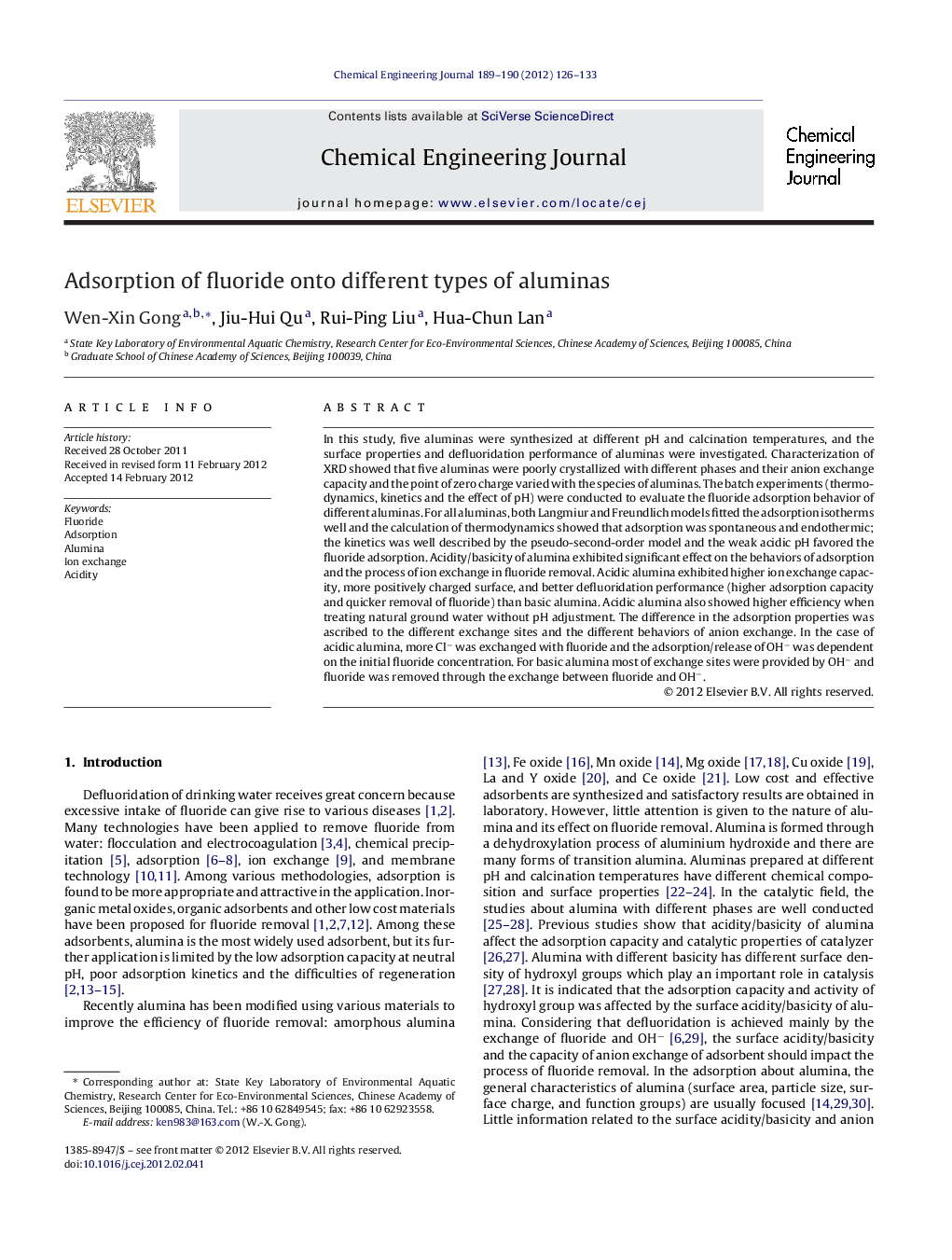| کد مقاله | کد نشریه | سال انتشار | مقاله انگلیسی | نسخه تمام متن |
|---|---|---|---|---|
| 149964 | 456441 | 2012 | 8 صفحه PDF | دانلود رایگان |

In this study, five aluminas were synthesized at different pH and calcination temperatures, and the surface properties and defluoridation performance of aluminas were investigated. Characterization of XRD showed that five aluminas were poorly crystallized with different phases and their anion exchange capacity and the point of zero charge varied with the species of aluminas. The batch experiments (thermodynamics, kinetics and the effect of pH) were conducted to evaluate the fluoride adsorption behavior of different aluminas. For all aluminas, both Langmiur and Freundlich models fitted the adsorption isotherms well and the calculation of thermodynamics showed that adsorption was spontaneous and endothermic; the kinetics was well described by the pseudo-second-order model and the weak acidic pH favored the fluoride adsorption. Acidity/basicity of alumina exhibited significant effect on the behaviors of adsorption and the process of ion exchange in fluoride removal. Acidic alumina exhibited higher ion exchange capacity, more positively charged surface, and better defluoridation performance (higher adsorption capacity and quicker removal of fluoride) than basic alumina. Acidic alumina also showed higher efficiency when treating natural ground water without pH adjustment. The difference in the adsorption properties was ascribed to the different exchange sites and the different behaviors of anion exchange. In the case of acidic alumina, more Cl− was exchanged with fluoride and the adsorption/release of OH− was dependent on the initial fluoride concentration. For basic alumina most of exchange sites were provided by OH− and fluoride was removed through the exchange between fluoride and OH−.
Acidic alumina and basic alumina have different exchange sites and different behaviors of fluoride removal. Cl− on the surface of acidic alumina provides numerous sites for fluoride and OH−. This leads to the good defluoridation performance of acidic alumina.Figure optionsDownload as PowerPoint slideHighlights
► Different types of aluminas are synthesized at different pH and calcination temperatures.
► The fluoride adsorption behavior of aluminas varies with alumina types.
► The fluoride adsorption is not fully explained only by anion exchange.
► Acidic alumina exhibits better defluoridation performance than basic alumina.
► Cl− on the surface of acidic alumina could exchange with OH− and fluoride simultaneously.
Journal: Chemical Engineering Journal - Volumes 189–190, 1 May 2012, Pages 126–133